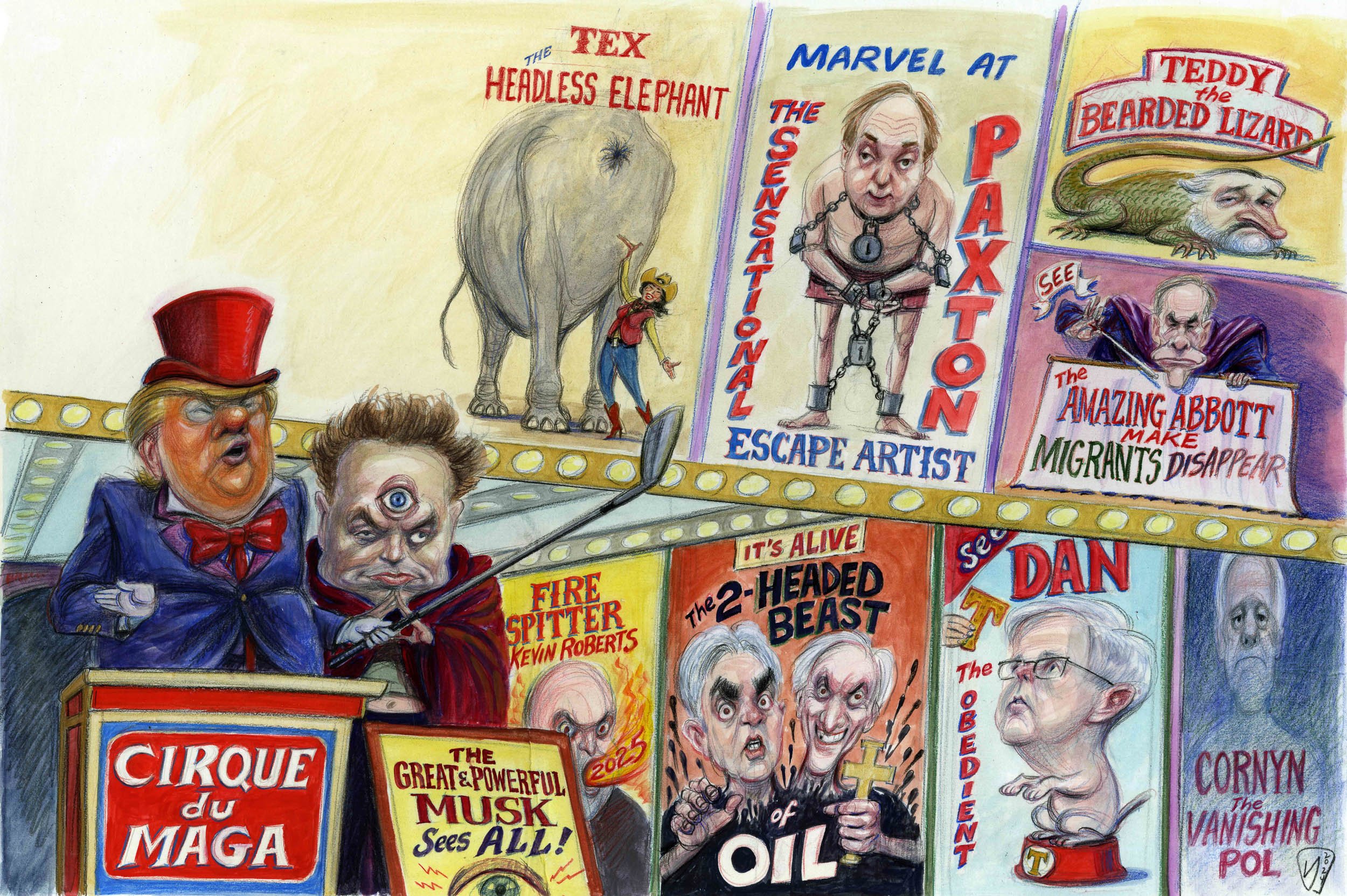Snippets of Bridget
Bridget Jones’s Diary
People try very hard not to like Bridget Jones. Especially the class that most identifies with her-30-something, single, professional women. Bridget isn’t exactly the ?ber-gal the media likes to trumpet as our modern working woman (an uncomfortable mix of strength and sex-a barracuda in the boardroom, a minx in the bedroom). She’s more like everything we’re not supposed to be: sloppy, fumbling, frequently hung over, unprofessional (she’s been sleeping with her boss); she’s a calorie-counting obsessive, yet also prone to inhaling a tray of chocolates, washed down with a bottle of chardonnay and a pack of Silk Cuts in a fit of post-breakup despair. The modern professional woman does not smoke, does not have runs in her hose, and most definitely does not shag her boss.
Or maybe she does. Which is precisely why Bridget was such a phenomenon, even, yes, an icon. Bridget began as a column in London’s The Independent in 1995, then moved to The Daily Telegraph. Her architect, Helen Fielding, the Pygmalion to Bridget’s Galatea, fully fleshed out the character in novel form-1996’s Bridget Jones’s Diary-at which point Bridget leapt from frumpish literary figure to international sensation and poster girl for the working woman. Each page, written in diary form, painstakingly catalogs every calorie consumed, every alcohol unit imbibed, every cigarette dragged, every good intention resolved (“I will not smoke,” “I will not get upset over men but instead be poised and cool ice-queen,” “I will learn to program video”), and every inevitable breaking, mangling, of said resolution. In her clippy shorthand, she rates herself-“130 lbs. (terrifying slide into obesity-why? why?, alcohol units 6 (excellent), cigarettes 23 (v.g.), [very good] calories 2472”-and a nation of women sprung up to commiserate and to celebrate. And then that nation of women mentioned the book to their girlfriends or co-workers and slipped a dog-eared copy to their moms or maybe their brothers, four million copies sold worldwide, and the nation of Bridget was born.
Not everyone who meets Bridget takes to her. Just as adamantly as some adore her, others quite violently despise her because of what she stands for? which could be any number of things, based on how you see her. Some hate Bridget for presuming to embody an entire subsection of society. Some hate her for trivializing the very real traumas professional “singletons” experience daily. Some hate her (and Fielding) for satirizing them. Either they’re absolutely nothing like Bridget, or they’re very much like Bridget, but would really rather not be glopped in with the other crazy four million, thankyouverymuch. Some just hate her because she’s kind of a doofus.
But then, isn’t that the point? Isn’t that why we like her so much? For being a doofus, as each of us often is? And in that spirit, the nation of Bridget collectively sighed, relieved at the acknowledgement that lots of people act dumb, get dumped, get drunk too often and sometimes alone, don’t feel good about their bodies, and have mothers who insist upon dressing us in sweaters embroidered with tacky holiday designs. If nothing else, Bridget elucidated how ridiculous the obsessing was? and gave us leave to continue doing so.
Bridget is often lumped into the same category as Ally McBeal and Sex in the City’s Carrie Bradshaw. The comparisons are superficial: All three are professional, typically single women with a propensity toward neuroticism and/or fantasizing. (Bridget frequently imagines herself slim and shining, tossing babies around in a casual but couture ensemble, like in a Calvin Klein ad. It’s certainly a less disturbing fantasy than Ally McBeal’s yard-long flicking tongue or the weirdly liquid, computer-generated dancing baby that signals her biological-clock countdown.) Really, the distinction between Bridget and the others is that Ally McBeal and Carrie Bradshaw belong in those slick Calvin Klein prints and short skirts, their professional highlights in tow. Bridget Jones, like most of us in the real world of bad hair days and late night bingefests, does not belong to that world.
And that’s what makes her transition to film so tricky. Every woman who reveres the page-bound Bridget has an idea of what she looks like, and it’s probably a mirror image of that woman. That’s the appeal of Bridget. The Bridget Jones nation feared that with Bridget’s move to celluloid, she might, well, lose the cellulite. Lose that which makes her so unglamorous and ungainly, so human, to the airbrushed magic of movies. So when the producers cast Texan Rene? Zellweger (Nurse Betty, Jerry Maguire), the fans were up in arms (“But she’s so American! So stick-thin!”). Again, people were poised to hate Bridget. The fans wanted to hate her for being co-opted by those damn skinny Yankees. The critics wanted to hate her, mostly because critics are innately steeled to hate that which popular opinion likes. Again, people were trying very hard not to like Bridget Jones.
And again, Bridget-as realized by Zellweger-proves impossible not to like. The actor is faithful to the novel in spirit and in poundage. (She put on 20 extra for the role, a topic of infinite interest for the media, as was her quick shedding of the weight post-production.) Her British accent takes some getting used to, but Zellweger so completely inhabits this role even the accent begins to feel like something she’s lived in all her life. The plot strays some from the original source, but many of the comic set pieces remain. They give Zellweger the chance to unreel the extent of her comedic talents: an exquisiteness of timing to rival that of Greenwich and an utter lack of vanity in the often embarrassing physical pratfalls. She is sweet and vulnerable and self-deprecating and bunny-rabbit cute and she nails the slight slump of a woman who isn’t quite comfortable with her body and is trying to find a way to melt into herself.
The movie that surrounds her is just as charming, just as gut-punch funny. It’s clever and quick and wholly engaging, by far one of the best romantic comedies out in years (not surprising considering much of the talent involved here had a hand in Four Weddings and a Funeral). If you were to walk into the theatre with no context, no assumptions, no knowledge of the media frenzy, and no familiarity with the cultural zeitgeist behind the novel, then you’ll most likely walk out with a grin and a good feeling. See, the film fails not because of what it is-which is charming-but because of what it isn’t.
Not a failure, really, but rather one fan’s bittersweet lament when something beloved becomes something else. Bridget Jones’s Diary, the film, has lost the novel’s jaggedness-that particular bite that made it social commentary rather than mere romantic romp. To be sure, any time a 300-page novel is distilled to 90 minutes, something’s bound to be lost in the translation. Here, sadly, what’s lost is the resonance, the pathos of it all. The humor and the heart of the novel remain intact, but the uglier stuff is gone: the self-loathing, the mortification and misery that can’t be mined for laughs.
Much has been made about the casting of Zellweger and her strenuous efforts to transform herself into the iconic character (almost comically absurd accounts of a doctor-consulted diet of pizza and omelettes in order to reach 140 1bs.-that is, normal-sized). To an extent, her casting represents what is wrong with Bridget Jones’s Diary. No disservice to Zellweger, who simply did her job-acting-and did it so exceptionally well, but her casting was completely contradictory to the spirit of the novel. It’s a slap in the face of the women who every day suffer the painful, personal redundancies of “I will lose weight, I will exercise, I will fit into those pants again, I will love myself more,” and the intoxicating optimism that comes with those resolutions only to be followed by inevitable heartbreak and “I hate myself,” when- quite predictably-none of those resolutions stick. The filmmakers have taken Bridget-so emblematic of women’s weight issues and the mindfucks we do to ourselves over our bodies-and scrubbed her over, softened her around the edges, eliminated the titanic despairs. The nation of Bridget loved her for her pains that cut to the bone, her unfixable wounds. What’s left is something more fleeting: the wounds will scab over, eventually heal.
Bridget is no longer Bridget. Snippets remain: the catchy, crass language, the fleshiness, the addictions. We still see her stumble out of a cab flat on her face after a night of boozing. But she’s a fun drunk now, rather than the honestly dysfunctional one. She’s still got her insecurities, but now they’re cute. They’re quirks rather than genuine neuroses. Well so what? Does the context even matter? Why should we care about the media hype? Do we really need another cultural zeitgeist anyway? Bridget Jones is still endearing, and her film is too. She’s funny and sweet and 140 pounds and impossible not to like. She’s a fun night out at the cineplex. She’s a grin and a good feeling — and the ousting of an icon.
Kimberley (no relation to Bridget) Jones is a writer in Austin.


